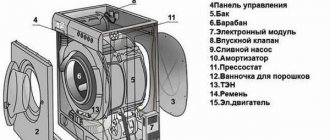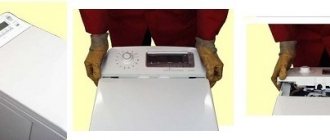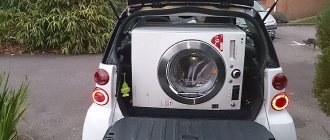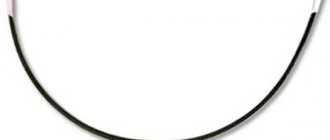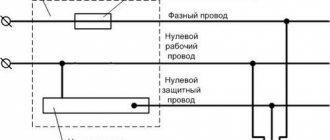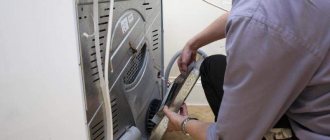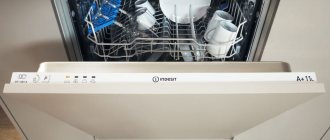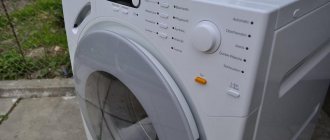A washing machine breakdown is an unpleasant problem that requires an immediate solution. If the equipment is under warranty at the service center, there is no point in troubleshooting it yourself. When the warranty period has expired, you can try to set up the unit yourself.
To do this, you will need a basic set of tools and a manual that tells you how to disassemble the washing machine. We suggest that you familiarize yourself with the detailed instructions. With such an arsenal, even an ordinary home mechanic can restore the device.
Potential problems and breakdowns
In order not to make unnecessary efforts, it is advisable to observe the equipment and understand what exactly is the deterioration in performance. If the overall quality of the wash has dropped, an uncharacteristic noise appears during the spin cycle, and the laundry remains wet after the spin procedure, the problem most likely should be looked for in the pump.
The same unpleasant phenomena are caused by clogged communication hoses. It is better to approach all these components from the front of the unit or from below. If foam comes out of the machine during operation, you need to stop washing, set the “Drain without spin” program and wait until the device completes all the necessary actions and opens the door.
Then you should remove the laundry, manually clear the foam from the inside and start the wash again without spinning. If this is not done, foam will penetrate into the engine or onto the control board, and repairing these components will cost the owners a substantial amount.
The reason for the appearance of abundant foam in the washing machine may not be a breakdown or malfunction of the unit itself, but the use of hand washing powder (it does not contain defoamers) or a significant excess of the standard dose of detergent
If the device does not gain temperature and does not warm up the water, it is most likely that the working heating element has failed. Its location is indicated in the accompanying technical documentation. It is usually located at the rear, but in some models, depending on the manufacturer and internal design features, it may be located in the front.
It may have built up scale as a result of using hard water and will need to be cleaned. Or, if the element burns out, you will need to replace it with a new heating element. The replacement process is described in detail in our recommended article.
If the machine takes a long time to wash, you should look for a fault in the electronics. It would be a good idea to check the functionality of the water temperature sensor and other controls. The same problem can occur due to an incorrectly placed drain hose.
A pressure switch or pump is responsible for uniform and rapid drainage of liquid from the washing container. Slowly pouring water clearly indicates that these elements have lost their functionality due to breakdown or operational wear.
To repair them or replace them with new ones, you will have to dismantle the side wall and penetrate into the upper part located behind the rear panel.
When failures occur in the drum or bearings, you will have to completely disassemble the device, identify the problem, carry out repairs, and then assemble the machine and start it up. If washing proceeds as usual, then operation can be continued.
This is just a short list of the main breakdowns identified in the machines. It is relevant for all household washing equipment, regardless of the brand and design features of each individual device.
Problems with electronics and software control are more complex problems and require professional intervention. To eliminate breakdowns of this level, regardless of whether the equipment is still under warranty or not, it is better to contact a specialized service center.
The certified technicians working there will carry out diagnostics, quickly identify the source of the malfunction and repair the damaged electronic unit or replace it with a new one.
How to turn on the washing machine
Loading washing powder
Washing powder must be loaded into a special powder compartment, which usually consists of three compartments:
- The left one is for the main wash.
- The right one is for pre-washing.
- Medium - for air conditioning.
This conditional distribution is typical for most brands of devices. If you want to clarify this information, please refer to the operating instructions specifically for your model.
Advice! When adding washing powder, it is important to follow the dosage indicated on the packaging. There is an opinion that the more powder you add, the better the quality of things stretch.
However, if there is an excess of it, the laundry, on the contrary, is poorly rinsed; stains and white stains may remain, which can subsequently affect the development of allergies.
Selecting a washing mode
The operating mode (program) is selected either by pressing a mechanical or touch button, or by rotating the switch, the pointer of which is directed to a specific mode. Some models of automatic machines combine both types of control.
The device can have the following washing programs, depending on the type of fabric and intensity:
- fast;
- careful;
- delicate;
- manual;
- casual;
- Clothing for babies;
- cotton;
- synthetics;
- wool and others.
Determining the washing temperature
- the temperature is selected based on the degree of contamination of things; if you just need to refresh your laundry, just select a minimum temperature of 30˚C or 40˚C;
- Synthetics are best washed at a temperature between 40-60˚C;
- It is recommended to wash bed linen and bath accessories at maximum temperature.
Selecting the spin intensity of the laundry
The spin intensity is set by the number of revolutions per minute. The better the spin, the less moisture will remain in things, and they will dry much faster.
Important! For delicate items, you need to choose the minimum spin intensity. And especially delicate fabrics (silk, chiffon) are better not to be wrung out in the machine at all.
Starting the washing process
Modern units are equipped with a delayed start function, which is very convenient. For example, you can set a time to turn on the device while you are away from home, so that your clothes have time to be washed when you arrive. Or you can set the start time to 5 am so that the washing machine will finish working when you wake up in the morning, and you can pull out the already clean clothes.
End of cycle
For general care of your car, wipe the drum and rubber seal on the door frame with a dry cloth, as this is where a lot of water often accumulates. To dry the drum compartment and prevent the formation of mold and mildew spores, leave the door slightly open.
Source
Nuances of the preparatory process
Before you begin disassembling the washing machine, you must carefully study the accompanying documents included with the equipment, study the electrical diagram and become familiar with the structural design of the unit.
The next step is to do the following:
- carefully disconnect the device from the electrical network and water supply system;
- disconnect the drain hose from the sewer outlet;
- select a set of tools required for the work ahead.
Only after such thorough preparation can you proceed directly to disassembling the washing unit.
Dismantling of the housing and internal parts must be carried out in a strictly established order, otherwise there is a risk of damaging individual serviceable elements. As a result, you will have to replace not only broken parts, but also those that were damaged during improper assembly.
It is advisable that the craftsman have a sufficient amount of time at his disposal, since the disassembly/assembly process does not tolerate haste and fuss. In addition, all repairs must be carried out carefully and delicately, without causing harm to other internal and external parts of the unit.
How to prepare for disassembly
De-energize the device
Never disassemble the washing machine with the power on. This will harm the machine and, first of all, its owner.
Turn off the water supply
Turn off the water supply to the machine, as well as the drain hose leading from the water valve to the sewer. And drain off the remaining water.
Get these tools ready
- service hook;
- wrenches with a diameter of 8, 9, 19;
- flat-head screwdriver;
- Phillips head screwdriver;
- wire cutters or pliers needed for clamping clamps;
- construction nippers;
- pliers with insulated handles;
- curved pliers (somewhat similar to tongs).
Record the disassembly sequence
We recommend recording or filming the disassembly process; this will save a lot of time in the future when you start putting the washer back together.
List of required tools
To correctly disassemble the washing machine, a home craftsman will need the following tools:
- wrenches (size 8, 9, 19);
- service hook;
- screwdrivers (classic flat and Phillips);
- pliers and wire cutters used for self-clamping clamps;
- ordinary wire cutters;
- pliers with an insulated rubberized handle;
- bent long pliers.
Almost all of these items will definitely be found in your home arsenal, and the missing items will simply need to be purchased at a hardware store or borrowed from friends or neighbors.
If the machine runs for a long time, some screws may “stick” to the cells. Unscrewing them will be problematic, so it makes sense to use WD-40. A few drops will soften the joints and facilitate correct unscrewing of the connecting parts.
In addition to all the items listed above, it is worth stocking up on a medium-sized basin, where it is convenient to drain the remaining water in the hoses, and several microfiber cloths. They can be used to wet your hands, wipe the internal parts and collect the remaining working fluid that has spilled from the tubes from the floor.
Removing the control panel of the washing machine
When dismantling the control panel, the detergent dispenser must be removed. In almost all machines, you need to press your finger on the selected area in the middle of the detergent tray.
Removing the tray
Using a Phillips screwdriver, unscrew the screws that secure the detergent tray to the front panel.
Unscrew the tray
Next, holding the panel on the right side with your hand, we move the left side of the panel 90 degrees until the panel on the right side is completely uncoupled from the fastening mechanism.
Unhooking the front panel from the washing machine
Unhooking the front panel from the washing machine from the dog
We perform the following operation using a service hook; it is necessary to rotate the washing machine panel 180 degrees and move the panel to the side wall.
We insert the long end of the hook into the hole in the drawer, and attach the short end to the side wall of the machine.
This is what the docked panel should look like on top
This is what the bottom panel should look like:
This is what the docked panel on the right should look like
Instructions for disassembling washing machines
Structurally, washing machines, even those produced by different manufacturers, are very similar to each other. They have the same basic “filling” and work on the same principle. The main difference that matters during disassembly is the loading method - frontal or vertical.
All other criteria relate to external decorative fragments, small internal parts, fasteners and are not of significant importance.
Detailed description of disassembling the front washing machine
Front-type machines differ from their analogues in that they load laundry through a round door located on the front part. On the one hand, this is convenient and practical, on the other hand, it requires special attention and caution when removing the glass loading hatch during disassembly and repair.
When disassembling the machine and making repairs, you need to act carefully and carefully. Most of the body fragments are made of plastic and are vulnerable to mechanical stress. If impacted or overloaded, they may crack and the appearance of the unit will lose its aesthetics.
Equipment does not always need to be completely disassembled, as they say, down to the screw. Knowing how the device works and understanding the nature of the problems that appear, you can at least roughly determine the area where the problem is located.
This will help to start disassembly exactly where it is easiest to get to the failed element without touching normally functioning parts.
When the power button does not work, you need to check the electrical connection. If the connection is OK, then activation is blocked by an internal fault. It is unlikely that you will be able to diagnose it yourself. It is better to invite a specialist and instruct him to find the problem
We invite you to familiarize yourself with the step-by-step instructions that will help you cope with the volume of work yourself.
To disassemble a front-type machine, you must proceed in the following order:
- Remove the top panel . Using a Phillips-head screwdriver, carefully unscrew all fasteners holding the top panel of the device. Gently pull the cover towards you and remove it, being careful not to damage the fragile internal elements.
- Remove the detergent container . Empty the container responsible for distributing detergents. To do this, gently press the special zone located in the central compartment of the tray with your fingers. After all these manipulations, the container can be removed without any problems.
- Remove the control unit . To do this, you need to unscrew the screws in the upper area of the front panel, carefully unscrew the block 90 degrees and carefully remove it from the fasteners. Using the service hook, securely secure the panel to the side of the unit.
- Disconnect the connectors with wires by simply pulling them out of the corresponding grooves located in the control unit. This point is relevant if the design of the washing machine requires it.
- Remove the service panel by carefully prying it off with a flat-head screwdriver. To get to it, you have to unscrew the screws facing the sides at the bottom, on the front side of the device.
- Separate the rubber sealing collar from the center panel. To do this, use a screwdriver to release the clamp from the grooves holding it.
- Unscrew the screws holding the central panel to the body and remove the entire element.
- Disconnect the front hatch locking connector.
- Carefully remove the rear outer panel and set it aside. If necessary, unscrew the mounting screws and the tightening bolt of the drum assembly.
- Remove the fixing clamp with pliers and carefully remove the inlet hose that goes to the tank. Using the same principle, disconnect the hose going to the pressure switch.
- Remove the counterweight blocks located at the front or rear (depending on the model) to ensure a stable position of the unit on the floor during operation and spinning, after first unscrewing the long mounting bolts.
- Remove the heating element . In most models it is located on the back side in the lower compartment of the case. Some manufacturers also place it low, but in the front area of the tank. To disconnect correctly, you need to unscrew the fixing nut located in the center. Then press on the protruding pin and push it inside. Pry off the heating element with a flat screwdriver and carefully remove it.
- Remove the tank . To remove the tank, you will need to twist the lower shock absorbers, remove the springs, and only then will you be able to remove it.
- Disassemble the tank itself . If there is a need for this, then first twist the bolt securing the pulley, press the shaft inside the tank, remove the clamp and divide the tank shell into two halves.
After the machine is disassembled, you can begin repairing and replacing failed working elements.
Some washing machines are equipped with a one-piece disposable tank that does not require disassembly. Home craftsmen, if necessary, cut this part with a hand saw, and then assemble it together, fastening it with elongated bolts and waterproof, durable sealant
When all the necessary activities are completed, you will need to reassemble the unit, install it in its original location, correctly connect it to the central communications and test it for functionality. If everything is done correctly, the machine will function as usual and will not cause any more trouble to the owners.
Disassembling a top-loading washing machine
For vertical washing machines, the most common negative phenomena are spontaneous opening of the working drum, corrosion of the metal block, imbalance of the central moving unit during washing and bearing failure.
In vertical units, the upper door seal loses elasticity over time and becomes deformed. As a result, puddles appear under the machine, and rust forms on the body. To fix it, you need to remove the control panel, remove the seal and install a new one.
To troubleshoot such problems, the equipment will definitely have to be disassembled. This process is labor-intensive and requires a lot of attention and concentration.
But this does not mean that it is impossible to repair a vertical unit at home. You just need to strictly follow the instructions and be careful. Then everything will go smoothly and getting to the problem node will not be difficult.
We offer a step-by-step description of the process for independent craftsmen. Before you begin disassembling a washing machine with a vertical type of loading laundry, you need to disconnect it from the central communications.
Then place the machine in a convenient place so that it does not disturb anyone living in the room. Next, you need to prepare specialized tools and stock up on a basin and a rag to immediately wipe away any remaining water that has spilled onto the floor from the communication hoses.
Now you can start disassembling the equipment and take the following steps:
- unscrew the fixing screws located on the sides of the device;
- carefully move the base working unit towards you and disconnect the electrical wires;
- remove the control panel;
- remove the dispenser for powder and other detergents;
- remove the side and top panels;
- remove the fastening clamp;
- carefully remove the plastic casing, being very careful not to damage it in any way;
- start repairing equipment.
When disassembling a washing machine, you need to remember exactly the order of the wires and internal elements.
To guarantee, it is appropriate to photograph all the components so that you can then assemble the unit correctly and strictly in the same sequence as it was originally.
A washing machine that is not assembled correctly after repairs will not work properly. The use of such a unit may result in a short circuit, spontaneous combustion and other negative phenomena.
Upon completion of the repair of the washing machine, all that remains is to return the equipment to its original place, connect it to the main communication nodes and activate the washing mode. If the work goes as usual, and the device does not malfunction, it means that the home technician did an excellent job and did everything absolutely correctly.
Disassembling the washing machine
Before you start disassembling the washing machine, you should find out what loading method the equipment has. Modern equipment for washing clothes is available with two types of loading - frontal and vertical. Basically, all automatic and semi-automatic washing machines have front loading, and other devices have vertical loading. To ensure that the parsing process does not cause problems, it is worth considering the parsing scheme for each type separately.
Front loading
The front loading type is typical for automatic and semi-automatic machine models from Zanussi, Samsung, Lg. The disassembly procedure of different manufacturers of these devices has its own characteristics. But there are still general principles that are the same for almost all manufacturers of washing appliances:
- The first step is to remove the top panel. To do this, use a Phillips screwdriver to unscrew the fasteners, and after that you should carefully pull the cover towards you and carefully remove it. Everything must be done with extreme caution so as not to break them;
- release of the dispenser recess intended for powder or bleach. To release the distributor recess, you need to press your finger on a special area, which is located in the central part of the tray. Then the container is quickly and easily removed;
- dismantling the control unit. First you need to unscrew the screws of the upper compartment of the front panel; with extreme care, turn the unit 90 degrees, then carefully remove it from the fastening mechanisms. Using a service type hook, the panel is secured to the side of the washing appliance. Sometimes you can disconnect connectors that have wires. To do this, you just need to remove them from special slots in the control unit;
- you need to remove the service panel, which is located at the bottom of the front of the washing appliance. To do this, unscrew the screws that come out on the sides, then remove the panel; to do this, carefully pry it off with a flat-end screwdriver;
- Next, the cuff made of rubber base is separated from the panel located in the central part. To do this, use a screwdriver to pry up the clamp, then it is released from the grooves;
- After separating the cuff from the central panel, it is necessary to remove the counterweights. In all models of Lg and Samsung machines, these elements can be located either in the front or in the back. In appearance they look like blocks made of concrete base. These elements are designed to ensure that the washing device does not produce strong vibrations during washing, spinning, or other modes. These parts are usually attached using long bolts. The bolts should be unscrewed and the counterweights removed;
- then the element for heating the heating element is removed. In many Lg, Indesit, Samsung washing machines, this element is located on the back side at the bottom of the tank. First of all, you need to unscrew the fixing nut. This nut is in the middle. After this, you need to press on the pin, with the help of which the nut itself was twisted. This pin needs to be pressed inward. If it is difficult to do by hand, you can lightly tap it with a hammer. The heating element must be pryed off with a flat-tipped screwdriver and this element must be carefully removed;
- After this you need to remove the drive belt. This element is stretched from the washing appliance motor to a pulley that is attached to the tank. In addition, you should remove all wires located in the tank and motor. The fixing elements of the tank must be removed and the tank itself must be removed;
- Next, the central panel is removed. First you need to unscrew the 4 screws that hold and attach this element to the body. Then the panel is dismantled;
- after this the hatch locking connector is disconnected;
The wires need to be disconnected from the engine
- If necessary, the rear panel can be removed. To do this, unscrew special fastening screws, a coupling bolt.
And here is the assembly of a washing machine of Lg, Samsung models. Indesit. Zanussi and other models are done in reverse order. But assembly should be done with special responsibility; all elements and wires must be in their places. Any inaccurate movement or incorrect installation can lead to breakdown and complete failure of the washing device. Therefore, when disassembling the washing machine, you need to remember the exact location of each element. Fortunately, all models of washing machines (Samsung, Indesit and others) have the same arrangement of elements.
Top loading
Usually, a baby washing machine, model from Zanussi, has a vertical loading. Disassembling devices with this type of loading has certain difficulties. The fact is that devices of this type have many malfunctions, problems, which include the most common:
- corrosion damage to the metal base block;
- spontaneous opening of the drum;
- rapid imbalance of the drum during the washing period.
But there is a main problem with these washing appliances, which occurs most often - bearing failure. And in order to make repairs when this malfunction occurs, you need to disassemble the washing machine.
First of all, disassembling a washing appliance with a vertical type of loading of laundry begins with dismantling the control panels:
- from the side, the screws intended for fixation are unscrewed;
- then the block is moved towards you;
- then the wires are disconnected;
- After this, the panel itself is removed.
Removing the control panel
After this, the disassembly scheme for the washing appliance follows the same principle as disassembling a washing machine with a front-loading type of laundry:
- the dispenser or tray intended for filling or pouring detergents is removed;
- then the top and side panels are dismantled;
Removing the front panel
- After this, the drum is released. To do this, remove the clamp using a flat-end screwdriver;
- Next you need to remove the plastic casing that covers the tank. This element must be removed with extreme caution, because the material from which it is made is quite fragile and any incorrect or sudden movement can lead to breakage of the coating;
- It is imperative to remember the location of each wire and internal element, so that during subsequent assembly it can be assembled in the same form as it was. Otherwise, after assembly, the washing machine may simply not work. But this is the least that can happen. Sometimes incorrect assembly can cause a short circuit, which subsequently leads to a complete malfunction of the equipment.
Dismantling the board with wires. Places for connecting the cables should be remembered.
Removing the water fill valve
Disassembling a washing machine is a rather labor-intensive process that should be approached with special responsibility. Since the washing machine models Lg, Samsung, Indesit, Zanussi have almost the same device, the disassembly principle is no different. The only thing that needs to be taken into account is that devices with a vertical loading method, such as the baby, have some differences from devices with a front-loading type. The main thing is to remember during the dismantling process the exact location of all the parts so that during the subsequent assembly process everything can be installed in the right order in the washing machine.
Subtleties of disassembling cars of different brands
Washing machines made by different manufacturers are generally similar and perform the same set of basic functions. However, there are significant differences in the design of the units and the arrangement of internal working parts.
For many popular washing machine models, the heating element is located in front. To get to it, you just need to remove the front cover and carefully remove the part for subsequent repair, replacement or cleaning.
For correct disassembly, it is very important to know the specific unique features of the model to be repaired. Then the work will be easy and you will be able to penetrate the fault zone without any problems.
Steps to disassemble Samsung machines
Samsung household washing machines are quite easy to disassemble. The container for loading powder is located conveniently and is held on by only two screws. The working heating element is located at the bottom of the tank directly under the front cover and getting to it is not difficult.
If the door of a Samsung washing machine does not open, the problem should be looked for in the control module. It is quite difficult to cope with such a plan on your own. It is better to transfer this work to specialists from the service center
You can learn more about repairing Samsung washing machines in a step-by-step guide, which is given in our recommended article.
The nuances of repairing models from Ariston
In Ariston products, bearings and tank seals most often fail. The design of the model is thought out in such a way that this unit cannot be repaired. But for skilled and experienced home craftsmen there are no barriers.
To replace the seal, the solid tank is flared or sawed with a handsaw. There is no other way to restore parts, except, of course, by purchasing a new tank and installing it at the company’s service center.
A bad engine in Ariston equipment is a common occurrence. To repair, you need to unscrew the bolts, remove the back of the housing, and then remove the assembly. If after diagnostics it turns out that the element cannot be repaired, you will have to buy a new one and install it in place of the old one
The latest generation Ariston washing machine models are equipped with self-diagnosis devices, which significantly speeds up the process of troubleshooting. Codes of malfunctions and operational errors are displayed on the display, notifying about an emerging or impending problem. Decoding them will help you understand what should be repaired and how.
Procedure for disassembling Atlant washing machines
Atlant brand devices are practically designed and can be repaired. At the very beginning of disassembly, it is necessary to remove the counterweight, and then remove the external control panel. The drum in these models consists of two halves, secured with bolts, so any working parts can be replaced in no time.
Models from the Atlant company have a built-in self-diagnosis system. In the event of a malfunction, the electronics displays relevant information on the display. Owners can read the message, consult documentation and determine how to fix the problem
Specifics of Electrolux brand machines
Electrolux machines are very reliable and rarely break down. Our rating will introduce you to the top ten Electrolux washing machines in sales. The front panel can be easily removed and immediately provides access to all the main components and parts.
Working bearings and oil seals are placed on separate removable supports. To replace them, you do not need to completely disassemble the drum.
If the working drum in the Electrolux washing machine does not spin, most likely the brushes, drive belt, motor or control board are damaged. You can look for the problem yourself, but the technicians from the service center will do it faster and at the highest professional level
Features of LG washing equipment
LG household washing appliances have a complex design. To remove the front panel, you will first have to use a screwdriver to unscrew the nuts that securely fix the hatch cover. Then you have to carefully remove the screw that tightly tightens the clamp to hold the cuff.
To make it easier to deal with disassembling washing equipment, you can visually study the design features of the unit by looking at this diagram
Then you will need to remove the weighting material located on top and only then carefully remove the tank to be repaired or replaced.
The South Korean manufacturer equips its new models with a self-diagnosis system. Deciphering error codes will help you quickly and accurately determine what needs to be changed and where to repair. It will allow you to immediately decide whether it is worth doing the repairs yourself or whether it is better to go to a workshop.
Opening the washing machine door
Opening the washing machine door
Use a flat-head screwdriver to disconnect the front hatch door clamp. Then manually detach the cuff from the central panel, as shown in the figure below.
Disconnect the clamp from the front part
Then you need to remove the central panel of the washing machine. To do this, we will use a Phillips screwdriver; usually you need to unscrew the 4 screws that secure the walls of the washing machine, as well as the central panel.
Removing the central panel
The next step is to dismantle the central panel with the window.
Removing the central panel
Disconnect the washing machine door lock mechanism.
Disconnect the door lock mechanism
Removing the washing machine clamp
Using pliers, loosen the clamp on the water hose leading from the valve (providing recirculation) to the tank. And remove the hose (Jet-System) from the distributor of the washing machine.
Removing the hose clamp
First loosen the clamp on the hose coming from the pressure switch tank with pliers. Disconnect the hose coming from the pressure switch and remove the hose from the cuff of the car door.
Loosen the clamp with pliers
, then easily remove the clamp
Disconnecting the hose
Let's disconnect our hose from the cuff and remove it completely.
To do this, you will need to remove the cuff on the hatch, this must be done using a Phillips screwdriver, loosen the cuffs on the tank as shown below.
Loosen the screw cuffs on the tank. Using
a flat screwdriver, remove the cuff clamp from the tank. Do this without much effort; the clamp should yield to even slight pressure.
Remove the clamp from the tank
And lastly, you should unhook the cuff from the drum, which is attached to the washing machine
Remove the cuff from the drum
Conclusions and useful video on the topic
A detailed description of how to independently disassemble a Samsung washing machine with a front-loading type of laundry. Interesting design features of the model and curious nuances that arise during disassembly:
How to properly disassemble an LG washing machine at home. Detailed execution of all processes step by step:
Disassembling a washing machine is a meticulous process that requires attention. If the breakdown concerns only a separate part of the system, there is no need to completely disassemble the unit. If malfunctions are observed in the main components, efforts will have to be made to fix the problem.
Our step-by-step instructions will help with this, clearly describing the process. Having such a cheat sheet at hand, even a person with minimal experience can handle repairing a washing machine. If you still have questions, ask them in the comments and we will try to help you.
Tell us about how you disassembled the washing machine for repairs with your own hands. Share what difficulties you encountered and how you solved the problems. Please leave comments in the block form below, ask questions and post photos on the topic of the article.
Necessary tool
In order to disassemble the washing machine we need a tool. Most of the required tools are found in almost every home. If suddenly a tool is missing, you can buy it in a store or borrow it from a neighbor.
So, we need:
- Phillips and slotted screwdrivers.
- Set of wrenches of various sizes.
- Hammer.
- Plain pliers, bent pliers, pliers, wire cutters, possibly round nose pliers. All these tools must be insulated.
Before starting disassembly, we recommend collecting all the necessary tools. And also make sure that we have disconnected our machine from water and electricity.
If you plan to put the machine back together later, you can photograph particularly complex fastening points, wire connections and other parts. This will help you during assembly.
